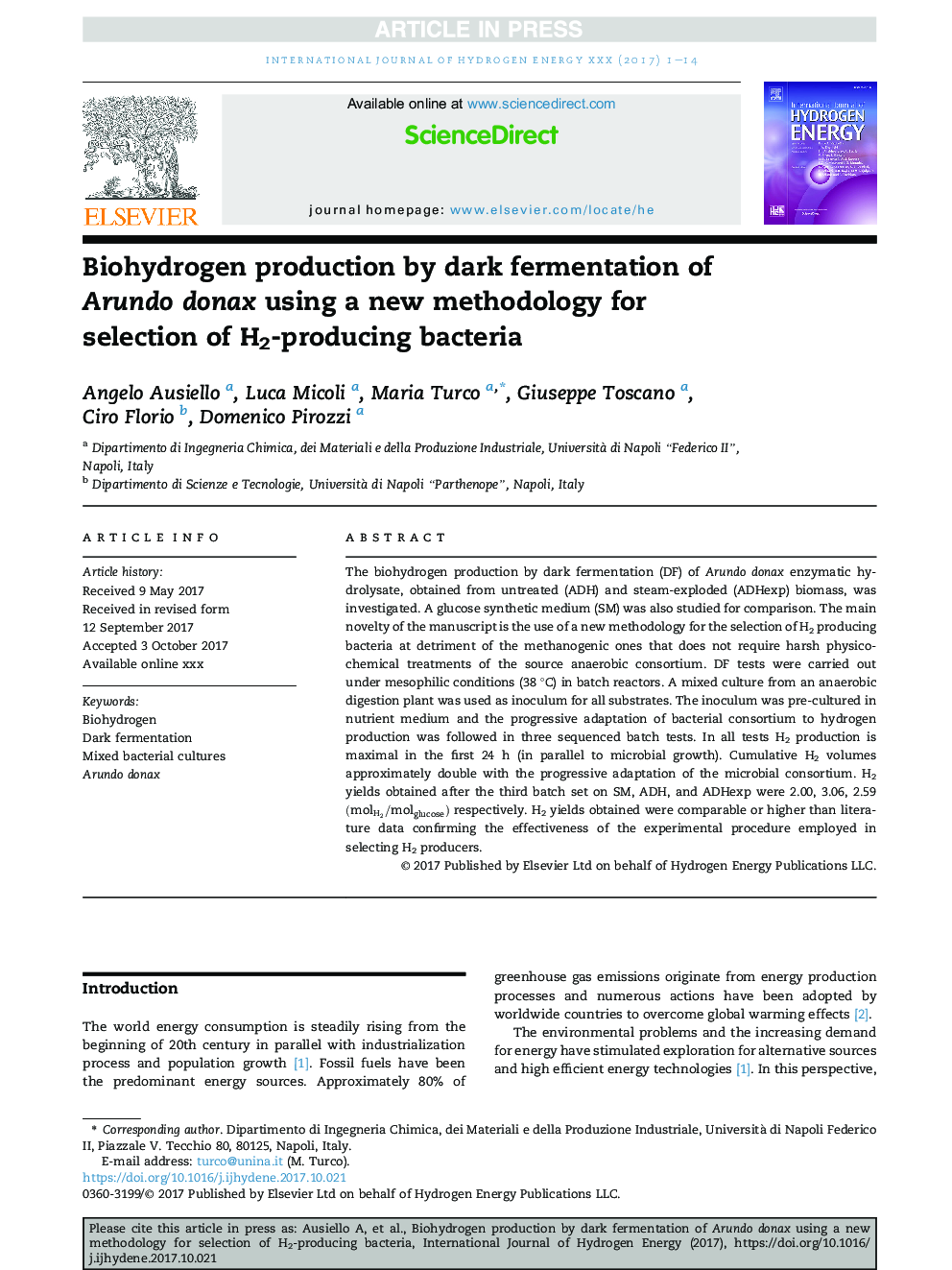| Article ID | Journal | Published Year | Pages | File Type |
|---|---|---|---|---|
| 7708649 | International Journal of Hydrogen Energy | 2017 | 14 Pages |
Abstract
The biohydrogen production by dark fermentation (DF) of Arundo donax enzymatic hydrolysate, obtained from untreated (ADH) and steam-exploded (ADHexp) biomass, was investigated. A glucose synthetic medium (SM) was also studied for comparison. The main novelty of the manuscript is the use of a new methodology for the selection of H2 producing bacteria at detriment of the methanogenic ones that does not require harsh physico-chemical treatments of the source anaerobic consortium. DF tests were carried out under mesophilic conditions (38 °C) in batch reactors. A mixed culture from an anaerobic digestion plant was used as inoculum for all substrates. The inoculum was pre-cultured in nutrient medium and the progressive adaptation of bacterial consortium to hydrogen production was followed in three sequenced batch tests. In all tests H2 production is maximal in the first 24 h (in parallel to microbial growth). Cumulative H2 volumes approximately double with the progressive adaptation of the microbial consortium. H2 yields obtained after the third batch set on SM, ADH, and ADHexp were 2.00, 3.06, 2.59 (molH2/molglucose) respectively. H2 yields obtained were comparable or higher than literature data confirming the effectiveness of the experimental procedure employed in selecting H2 producers.
Related Topics
Physical Sciences and Engineering
Chemistry
Electrochemistry
Authors
Angelo Ausiello, Luca Micoli, Maria Turco, Giuseppe Toscano, Ciro Florio, Domenico Pirozzi,
